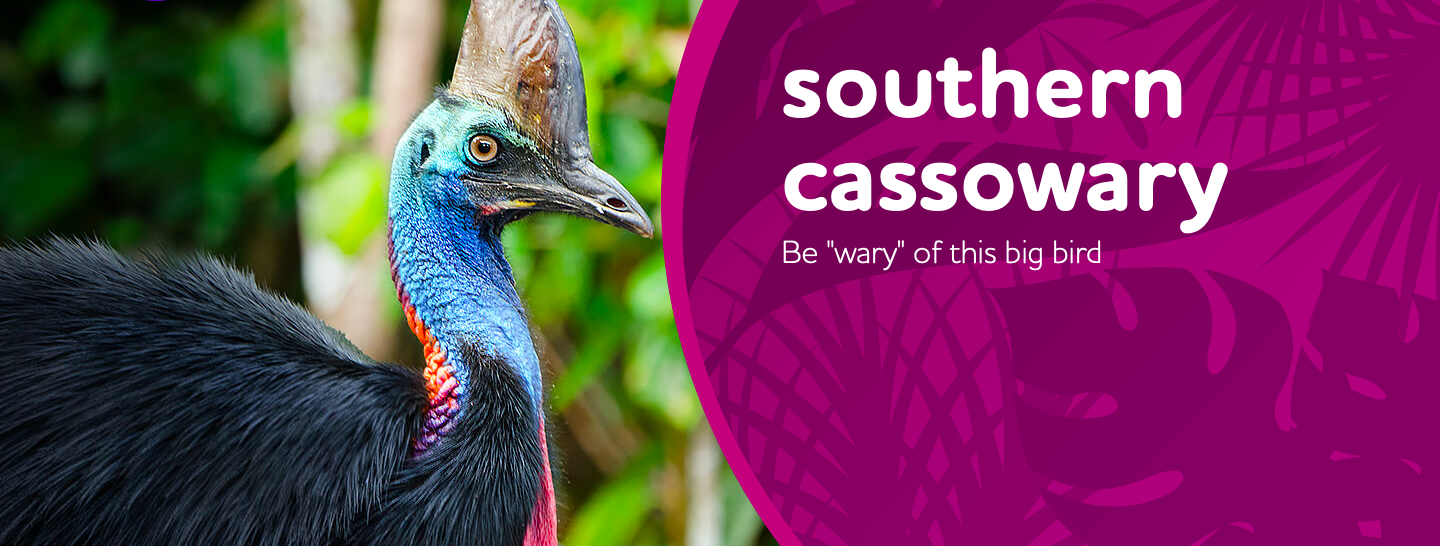
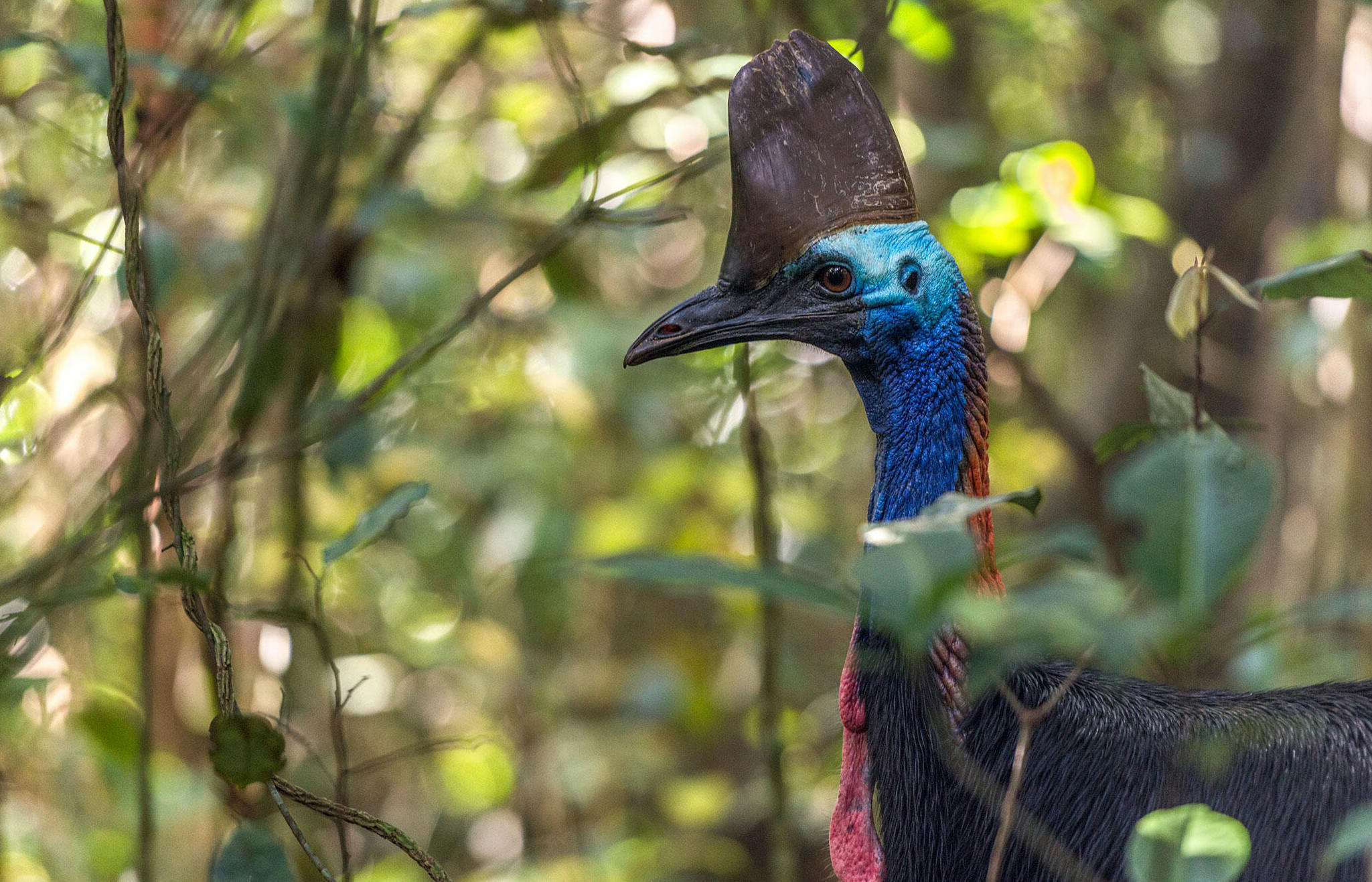

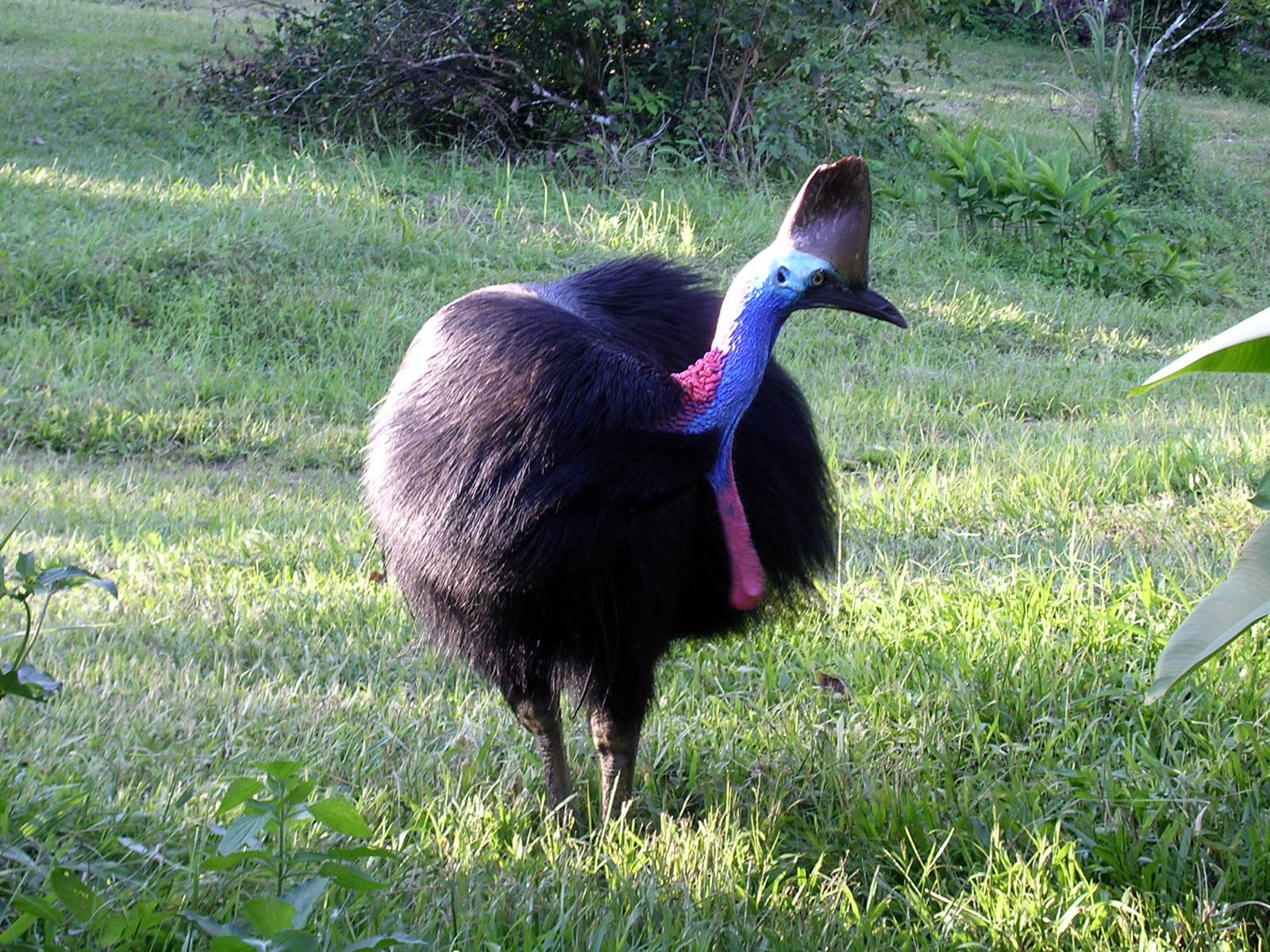
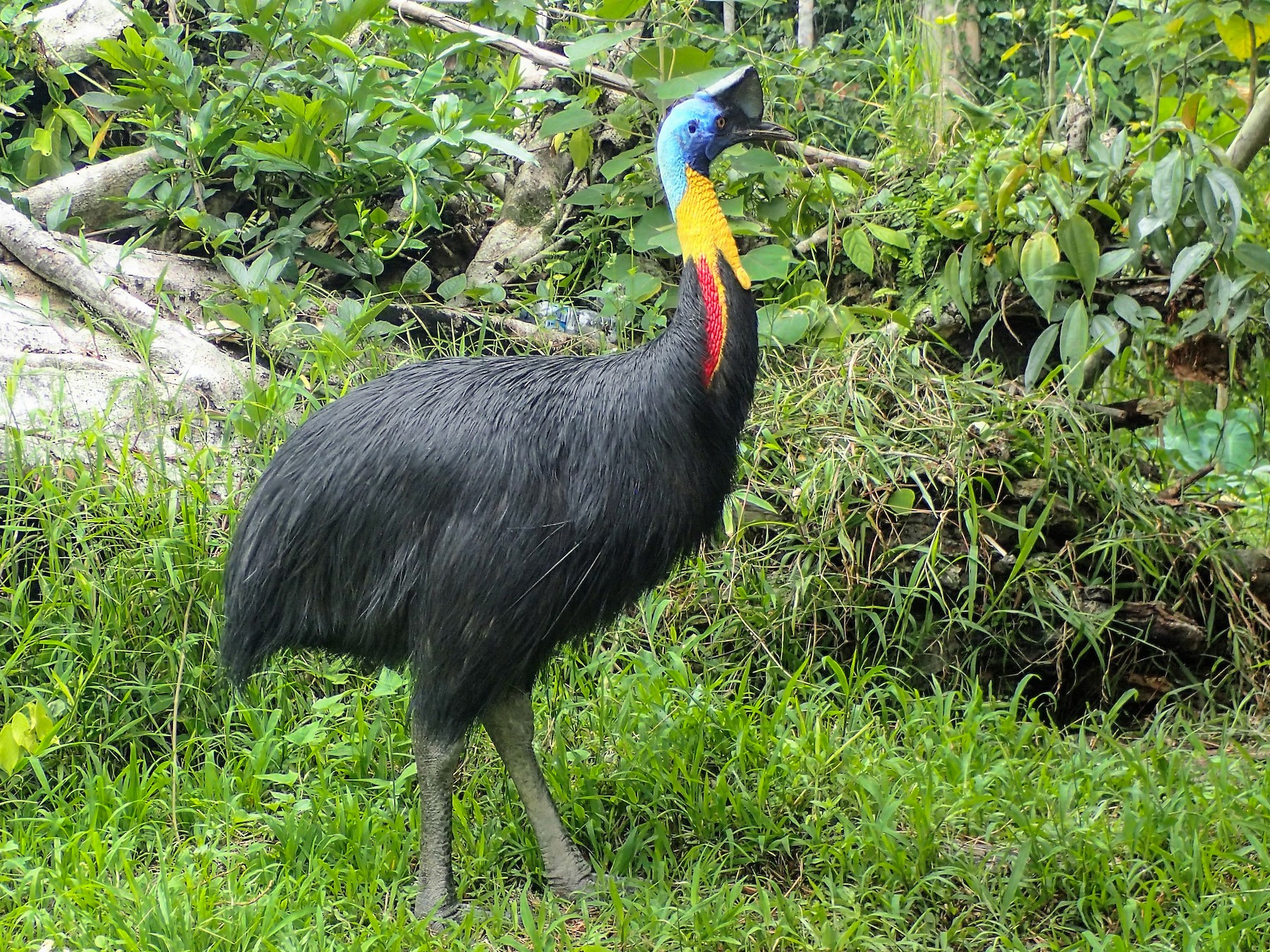
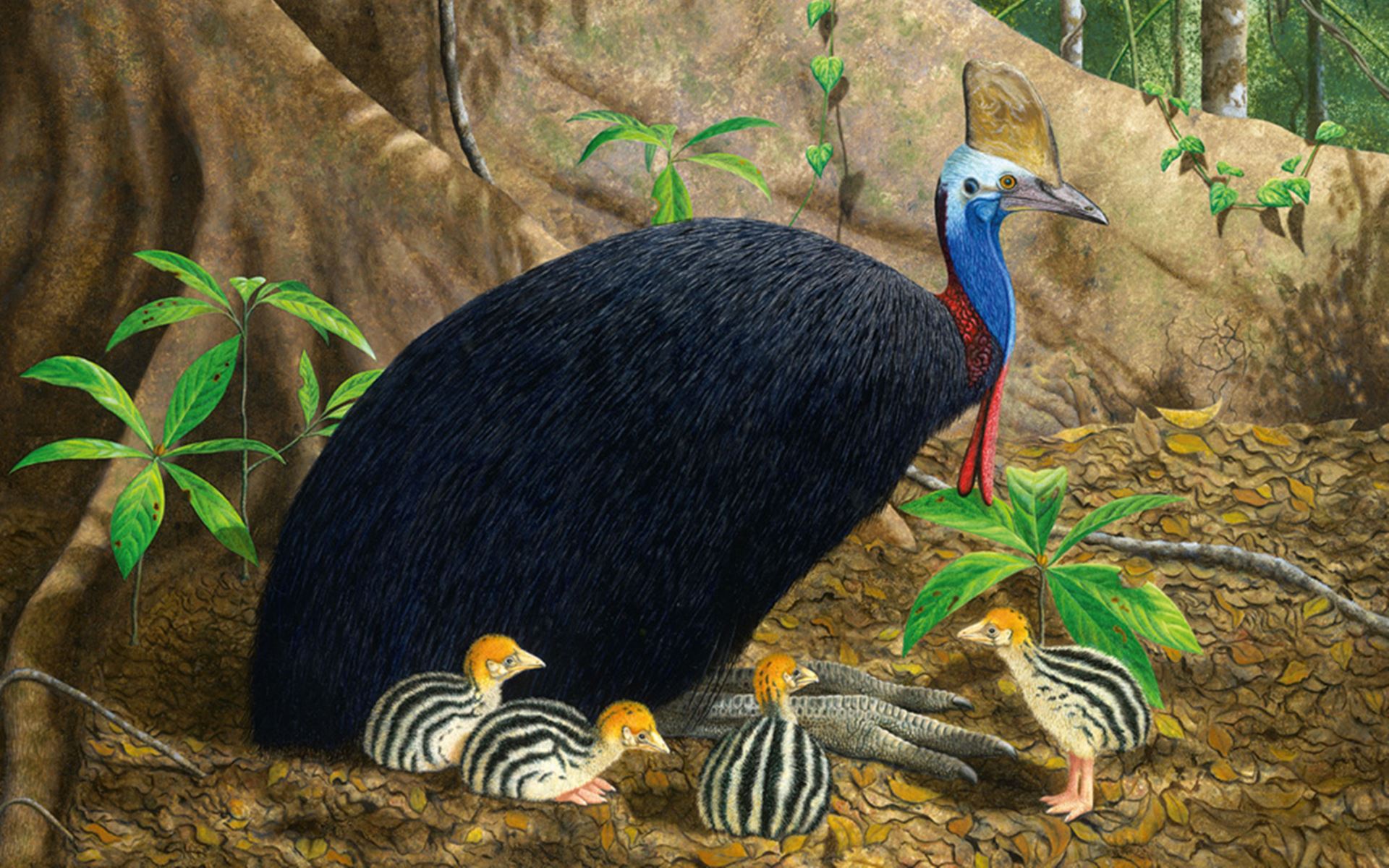
 Cassowaries live in tropical rainforests, melaleuca (paperbark) swamps, mangrove forests woodlands and can even be found foraging along beaches |
 Cassowaries prefer fallen fruit, but will eat small vertebrates, invertebrates, fungi, carrion and plants. Over 238 species of plants have been recorded in the southern cassowary diet. |

|
That strange knob on top of a cassowary's head is called a casque (Kaa-sk), or helmet. The hard outside of the casque is made of keratin, like your fingernails. Inside, there is a spongy material. No one knows for certain why these birds have a casque, but there are guesses! Perhaps it shows a bird's age, or protects its head as it pushes through tangles of branches.
Although this bird can't flap away from danger, it can, and does run quickly. With its powerful legs, a cassowary can reach about 30 miles per hour! Each foot also has a dagger-like claw. When the bird feels threatened, one kick can injure a predator.
Cassowaries make a few sounds to "talk" with one another. They hiss, whistle, and clap their bills. They also make a low rumbling sound that people very nearby can feel, but not hear. That doesn't happen often, though, because cassowaries are very shy in the wild and difficult to observe.